I pride myself on remaining unbiased when presenting my clients with options for the precious metal their bespoke jewellery is going to be made from. I have samples of all the different gold and platinum options, so they can try on rings in each colour to see which suits their skin tone best.
But if you asked me which was my favourite of the white precious metals, I would have to say white gold. So buckle yourself in for an impassioned explanation of why I feel this way – its an unusual preference for a jewellery designer!
But just to be clear – I also really like platinum, and for many projects, it is absolutely the right choice. I love the weighty feel of a handmade platinum ring, and the ice cold white suits some designs best. I won’t impose my own preference onto my clients, but what I do like to do is ensure that any misconceptions about white gold are put right, and that they get to see natural, un-plated white gold in the flesh so they can make informed decisions. A little bit of education and understanding makes the process even more enjoyable in my opinion!
We are all led to believe that platinum is the premium and most desirable choice for jewellery, and this is for two key reasons:
- Platinum is marketed as a more durable and hard wearing precious metal over gold.
- White gold has a reputation for being high maintenance to keep the colour white.
Lets tackle these misconceptions to illustrate the reasoning for my preference for white gold over platinum.
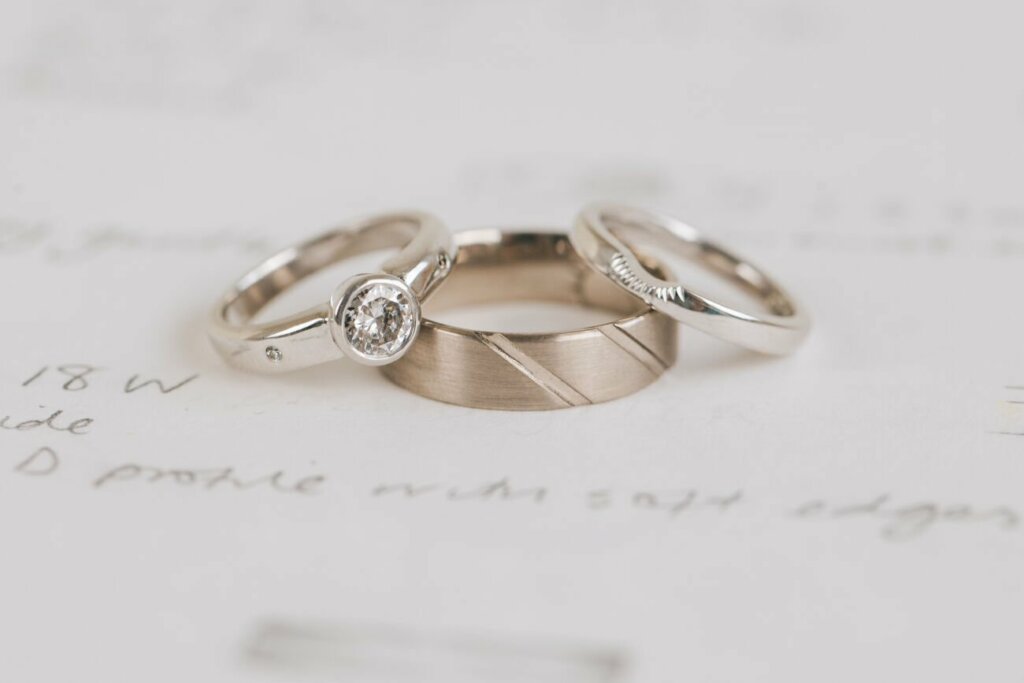
1. Durability
Bear with me while I digress a little – I promise it’s relevant! There is a real obsession with the durability of rings at the moment. Start researching wedding rings and the algorithms will flood your social media feeds with industrial metal wedding bands, promoting mega hard wearing, dent proof, ‘life proof’ qualities – your ring will look the same in 100 years that it did on your wedding day.
But is this realistic? And why are we looking for (or being told we are looking for…) perfection? Where is the soul in an industrial metal wedding ring? There is no tangible intrinsic value, no scarcity value, no tradition. No one has painted pictures of titanium wedding bands, or written poems about exchanging tungsten bands. Imagine the Lord of the Rings series based on Zirconium rings… somehow I don’t think the rings would have had the same enduring appeal. Ask a child to draw a wedding ring, and they will no doubt draw a yellow gold band.
These industrial metal rings that couples are being tempted with cannot be resized when your finger inevitably changes size as you age. They also can’t be cut off should you need them to be in an emergency. Knock the ring the wrong way and you may even break the ring into several pieces as hardness can equate to brittleness.
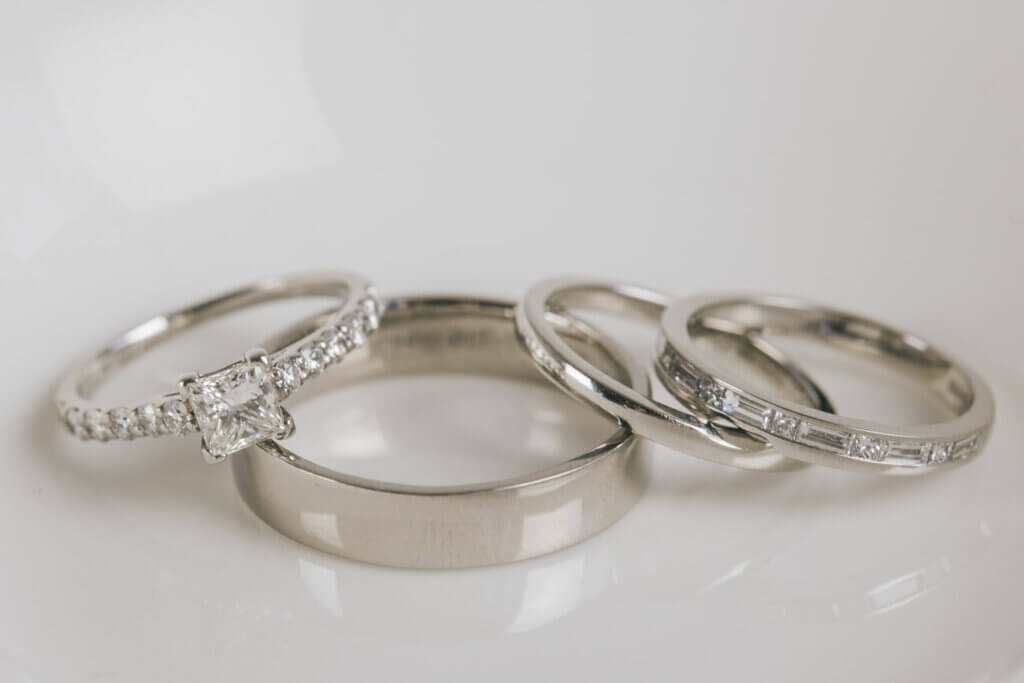
In contrast, precious metal wedding rings, whether they are gold or platinum, can be melted down, remodelled, resized, remade infinitely. All that history and sentiment trapped within the metal, instead of simply having to replace your original ring with a new industrial metal band to fit. They collect dings and scratches along the way, but don’t we all…!
As the late great John Peel famously said, “Listen, mate, life has surface noise”, and I believe our rings should too. Look at your grandmother’s wedding band – its possibly misshapen, lots of dents, any engraving will be patchy and worn… and isn’t that beautiful in its own way? It has collected the patina of life. Each mark has a story – the ring has lived.
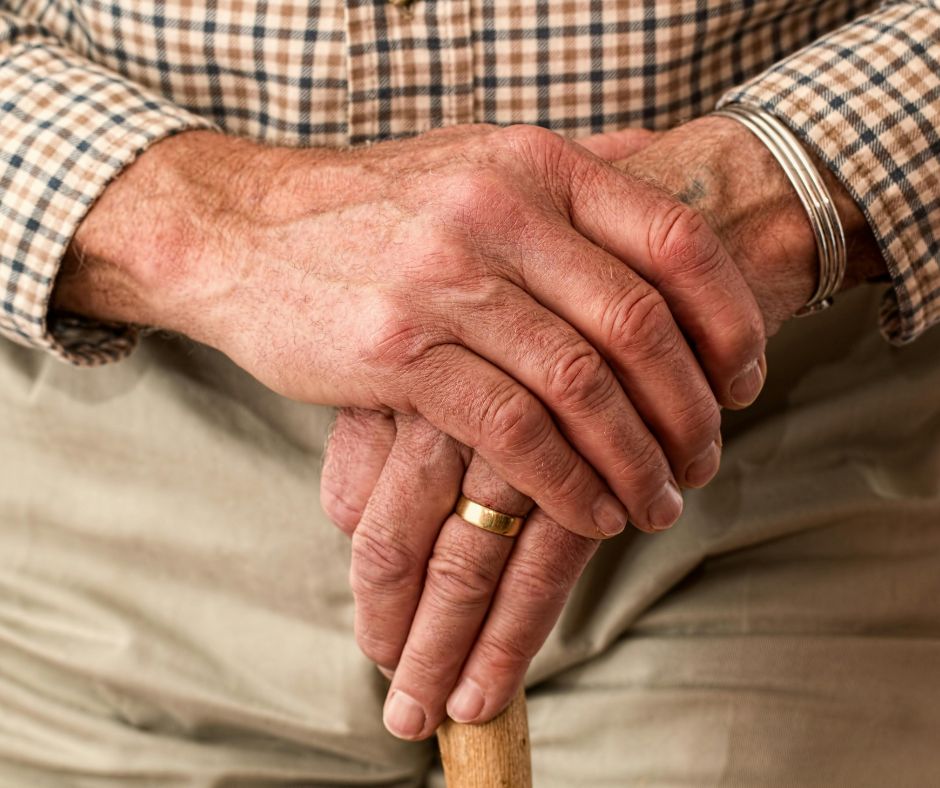
Industrial metal bands are a relatively new concept, but coming back to my original point, platinum has been marketed in a similar way. It is sold as the hardest precious metal and therefore the best choice because it will last forever and platinum settings be the strongest precious metal you could set your valuable stones in.
This is true – platinum is the most hardwearing of the precious metals. Ask a goldsmith, setter, or hand engraver which is the toughest precious metal to work with and I guarantee they will say platinum and palladium. But let’s remember that all precious metals, platinum included, are intrinsically soft. Unlike steel, which is worked by blacksmiths whilst it is hot, goldsmiths work with precious metals while they are cold, and therefore the metal has to be soft enough for a goldsmith to be able to manipulate and shape. So while platinum is about 30% more dense than gold, it is still a soft metal when compared to industrial metals.
What you are not told by sales assistants and most standard jewellers is that with this hardness, any dings and scrapes that platinum gets, will stand out more than they will in white gold. The slightly softer nature of gold means that scratches and scrapes will naturally burnish out with wear. This also means that white gold will stay polished looking, whereas platinum will dull quite quickly and will need re-polishing to look glossy again. Each time a piece of jewellery is polished, material is lost and the thickness decreases.
I have lost count of the number of enquiries I have received of people confused that their shop bought platinum or palladium wedding band looks well worn after one year. Quite often, high street wedding bands are light weight and therefore even platinum rings, that have been sold under the pretence that they are hardwearing, can misshape and look quite beaten up after a short amount of time. I have remade several of these rings, melting down the original platinum or palladium, and adding in new metal to bulk up the weight of the ring considerably, so the ring will last a lifetime.
So yes, platinum is tougher than white gold, but in terms of wear and tear, I would argue that polished white gold ages more gracefully and stays looking new for much longer.
Controversial, I know!
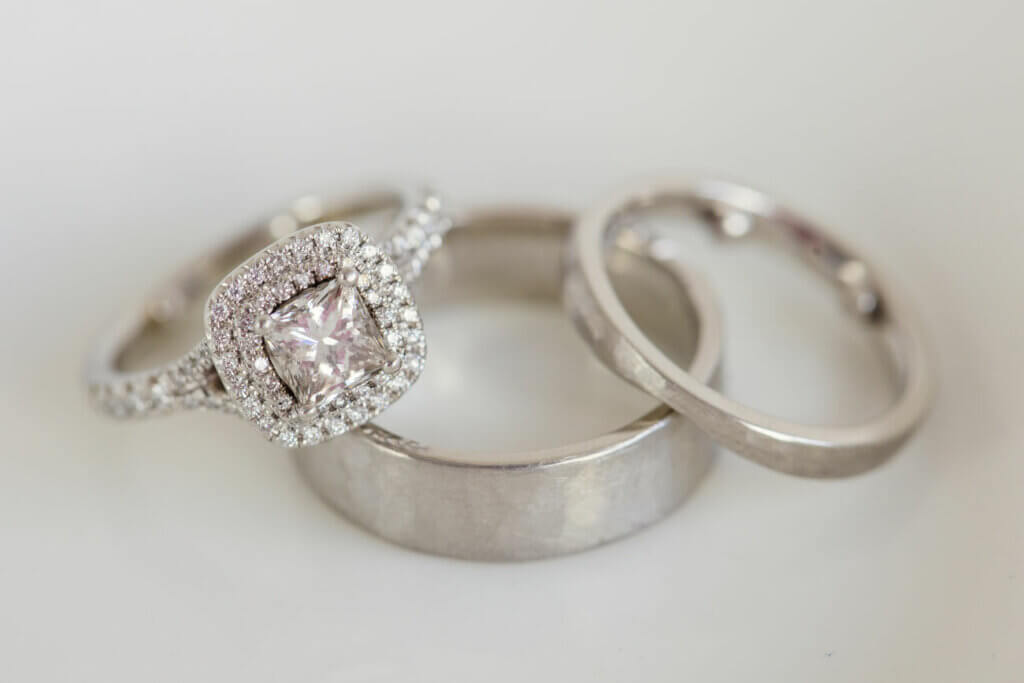
2. Maintenance
Platinum has a cool, chrome-like white tone. Look in a jewellery shop window, and the white gold jewellery will look identical to the platinum, and yet is a different price. You may have been warned off white gold as a choice for jewellery because it ‘tarnishes’, ‘goes yellow’, or needs ‘dipping’ regularly. I cover these misconceptions in detail in my most visited article, so I will keep it brief for the purposes of this article (and read more here if you really want to dig deep into the subject).
Whilst most jewellers automatically rhodium plate white gold jewellery, I offer my clients the choice, and educate them on the maintenance required when their white gold is plated. Although it has become the industry standard for white gold to be rhodium plated, there is no need for it be. Yes, rhodium plated white gold is a bit of a nightmare. With rings in particular, it will wear away quickly and unevenly – the back and top of the ring will wear first, with the sides and inside of the band remaining bright white. The patchy wear of the plating will make the natural tone of the white gold look yellowy in comparison.
Left un-plated, and viewed in isolation, white gold appears white. And its maintenance free!
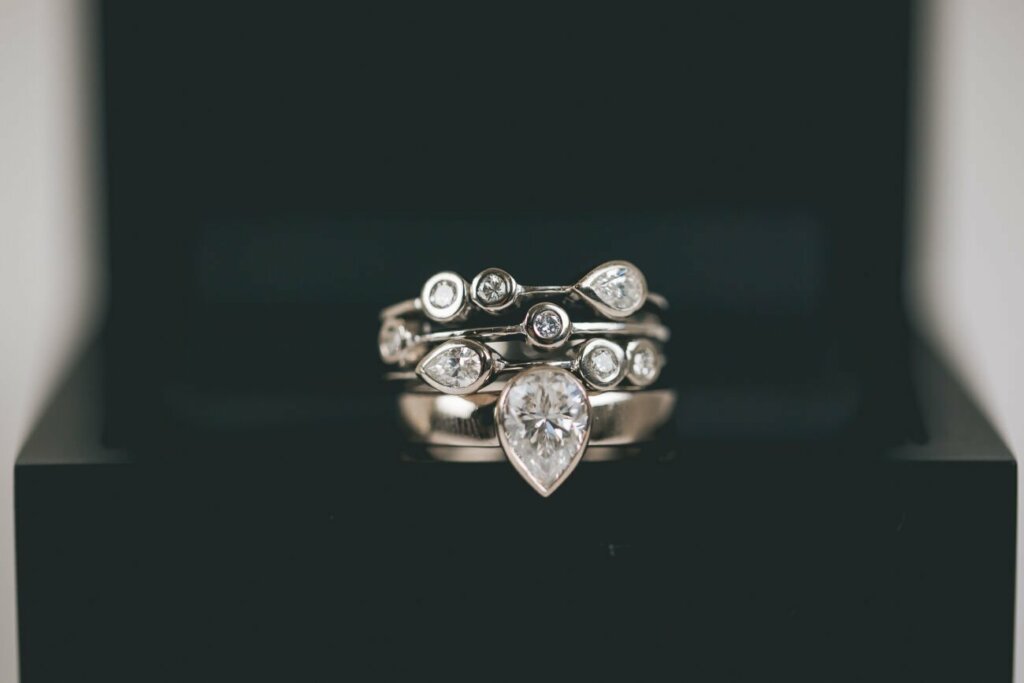
So lets not choose white gold as a ‘budget’ option compared to platinum, but instead value white gold for the different shades of white it offers consumers when left natural and un-plated. When 18ct white gold costs more than platinum at the moment, why would you choose it for your ring and then plate it to look like platinum, and then have to keep re-plating it to maintain that colour?
Instead, should we not celebrate the different shades of white that white gold in its natural, un-plated state offers?
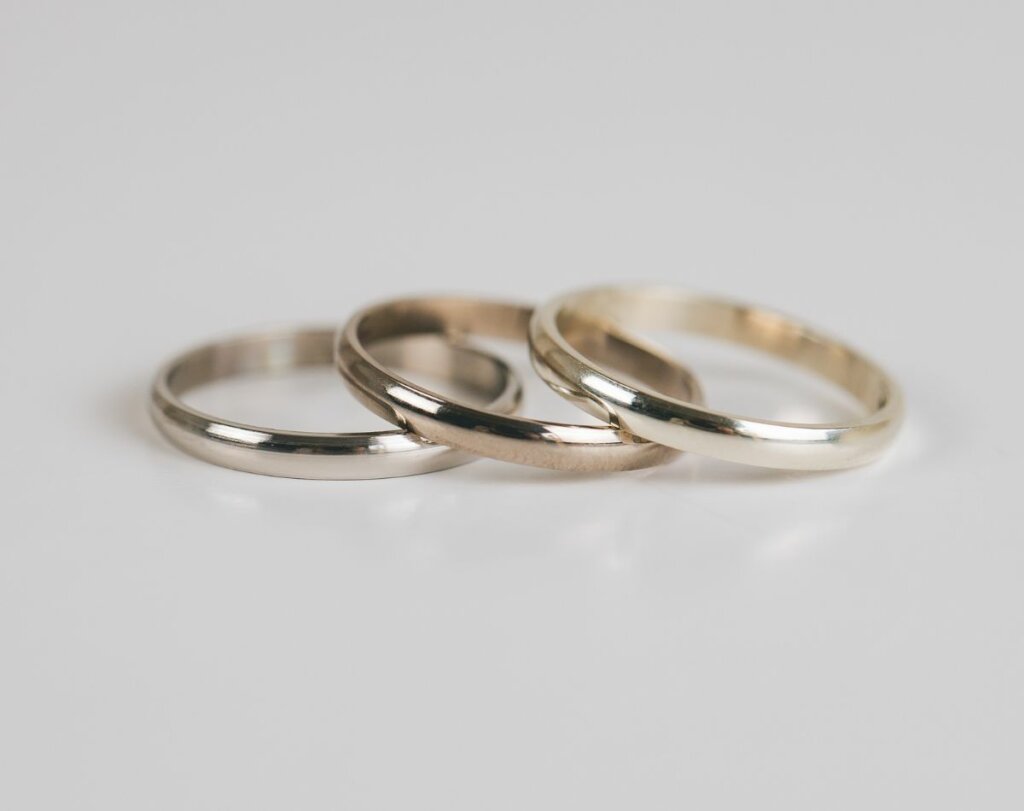
Which is Better, Platinum or White Gold?
Everyone will have a different opinion on this, and that’s ok! Some people will always choose platinum over white gold because it is denser and they like the chrome-like white, perhaps loving how platinum settings disappear into white diamonds. Others will fall in love with the warmer white tones of white gold – gunmetal in colour 18ct white gold, or creamy 9ct white gold. They might like how the white gold settings emphasise their diamonds, and how it stays polished looking instead of needing regular polishing to not look dull.
Ultimately, you do you, and I will never try to sway my clients once way or the other. What I will always do however, is show my clients natural white gold and make sure they have all the information about the long term wear and tear and maintenance needed to keep their jewellery looking its best. I want my clients to feel informed and knowledgeable about their investment and to feel happy they have made the right choice for them.
Let me know you’re thoughts in the comments below – do you like the different shades of white that natural white gold offers, or are you team-platinum forever?
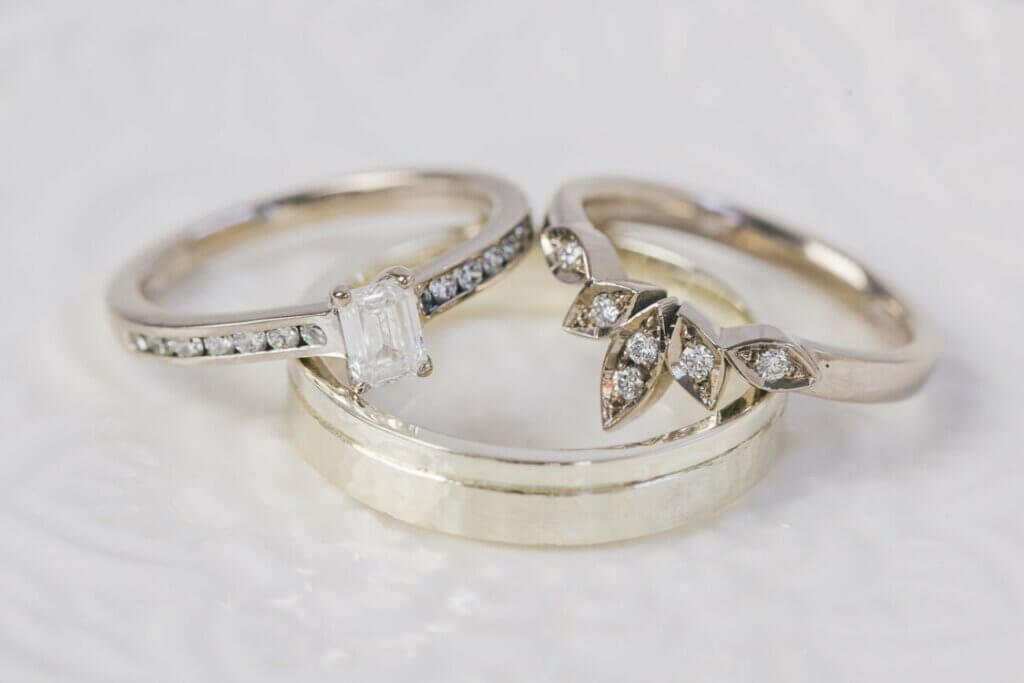

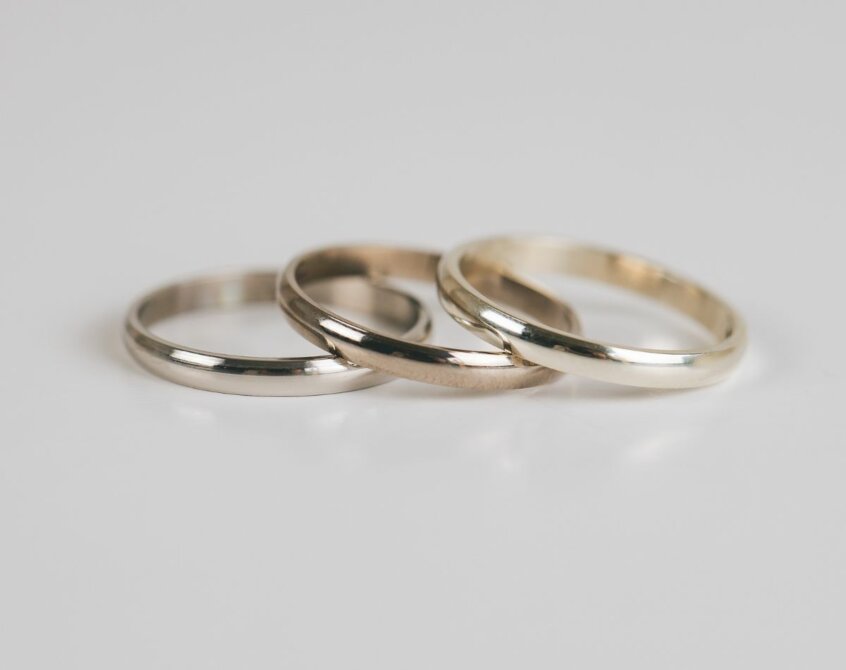
6 Comments on “Platinum vs White Gold”
I found this fascinating and very informative well done, you have explained something that has always baffled me …
I’m so glad you found this interesting Therese!
I’ve always wondered about this. Thank you. Whenever I’ve asked jewellers about this they really push the rhodium plating. Our own wedding rings & my engagement ring are natural & I’ve always been happy with the colour even after 53 years. There was no option then, to my knowledge. I never liked the idea of maintainance nor the artificial brightness of the rhodium plating. I’ll definitely always opt for the natural white gold now. 😊
Lovely to hear that you have stood your ground and enjoying the natural white gold colour
Thank you, I’ve always wondered why the jewellers that I’ve visited push the rhodium plating. My husband & I have always been happy with the colour of our natural 18 ct white gold wedding rings even after nearly 54 yrs. I’ve never liked the false looking shine of the plating nor the idea of on going maintainance. I’ll always opt for natural.
I completely agree about the false look of rhodium plating – lovely to hear you enjoy the natural colour